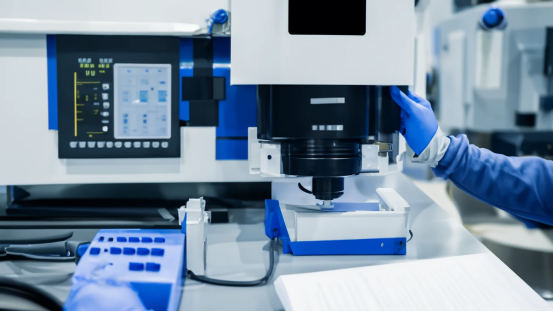Technology
Innovations in Metallurgical Testing: Blending Tradition and Technology for Superior Outcomes
Metallurgical testing is experiencing rapid advancements, driven by industries demanding greater precision and reliability. From aerospace to medical devices, new techniques are reshaping the way metals are evaluated. These innovations promise more efficient processes, higher yields, and consistent compliance with rigorous standards.
Metallurgical testing is experiencing rapid advancements, driven by industries demanding greater precision and reliability. From aerospace to medical devices, new techniques are reshaping the way metals are evaluated. These innovations promise more efficient processes, higher yields, and consistent compliance with rigorous standards.

Unlocking Metal Insights: Advanced Techniques for Deeper Understanding
Modern metallurgical analysis goes beyond simple identification, focusing instead on uncovering properties at micro and nano scales. Advanced tools reveal unprecedented details, enabling stronger materials, safer structures, and streamlined production workflows.
The Rise of Intelligent Testing Systems
Envision testing equipment that not only performs evaluations but also adapts and learns. Smart testing systems integrate Artificial Intelligence (AI), Internet of Things (IoT), and real-time data analytics, offering a comprehensive view of material behavior.
Real-time analytics reduces delays by allowing continuous monitoring and adjustments during tests, improving speed and accuracy. AI models predict maintenance requirements, extending equipment life and minimizing downtime. IoT integration allows remote supervision and control, connecting metallurgists with real-time results regardless of location. Together, these technologies are transforming material characterization, ensuring performance aligns with modern industry demands.
Non-Destructive Testing: Preserving Material Integrity
When test specimens cannot be damaged, Non-Destructive Testing (NDT) offers solutions that safeguard material integrity while delivering detailed evaluations.
NDT is vital for inspecting additively manufactured components with complex geometries and plays an equally important role in monitoring aging infrastructure such as bridges and pipelines. AI and machine learning integration into NDT workflows enhances flaw detection, improving accuracy to pinpoint defects invisible to the human eye. These developments ensure both sustainability and safety while maximizing the useful lifespan of critical assets.
Precision at the Microscale
In microelectronics, precision at the smallest dimensions is critical. Microscale metallurgical testing validates production quality and component reliability.
Destructive approaches, like wire pull and die shear tests, reveal how micro-components withstand stress. Non-destructive techniques such as 3D optical profilometry and X-ray Fluorescence (XRF) offer micron-level resolution to analyze wafer surfaces and verify metal stack compositions. As electronics shrink further in size, these methods become indispensable for advancing durability and efficiency in next-generation devices.
Electromechanical Testing Powerhouses
Electromechanical testers remain cornerstones of metallurgical analysis, now enhanced with precision-driven features.
Digital Image Correlation (DIC) measures strain without contact, while servo-hydraulic systems offer high-force capacity with excellent control. Multi-protocol capabilities allow tensile, fatigue, and other tests to be performed on one system, streamlining lab operations. These advances deliver greater efficiency and ensure accurate evaluations for diverse material applications.
Solder Paste Inspection in SMT Assembly
In Surface Mount Technology (SMT), solder joint quality determines device reliability. Automated Solder Paste Inspection (SPI) systems ensure optimal connections.
SPI performs inline checks across each PCB, detecting flaws early in the process. This safeguards fine-pitch and flexible circuit assemblies, reducing rework costs and ensuring long-term device reliability. As electronics continue to evolve, SPI is becoming increasingly central to metallurgical quality assurance in packaging processes.
From Traditional Methods to High-Tech Systems
Metallurgical testing has evolved from simple tools to advanced systems powered by automation and AI. This transition underscores the continual pursuit of reliability and quality.
The Classical Foundation
Historically, metallurgists relied on optical microscopy to study grain structures and hardness tests such as Rockwell and Brinell to evaluate resistance to deformation. Chemical analysis determined alloy composition and impurities. Though labor-intensive, these practices built the foundation for today’s advanced approaches.
Automation and the Digital Revolution
Digital technology redefined testing. Automated methods improved accuracy and throughput. SEM, coupled with energy-dispersive spectroscopy (EDS), provided nanoscale imagery and composition analysis, while X-ray diffraction (XRD) revealed crystal structures. These tools reduced time and enhanced detail, solidifying automation’s role in modern labs.
AI and Smart Labs in Action
Today’s labs increasingly adopt AI and IoT to drive predictive capabilities. Algorithms classify microstructures, identify subtle anomalies, and optimize workflows. Sensors and cloud-based data systems enable real-time monitoring and collaborative research worldwide, boosting efficiency while reducing waste and energy consumption.
NDT Enhancements for Safety and Reliability
NDT techniques like ultrasonic, eddy current, and radiography continue to improve. Augmented reality overlays now help inspectors identify flaws with greater clarity. These methods protect critical infrastructure and support safety without harming materials.
Looking Toward the Future
Future testing will feature deeper AI integration, robotics for sample handling, and predictive analytics for material performance. Combining traditional metallurgical knowledge with modern technology promises safer, stronger, and more sustainable materials across industries.
Questions and Answers
What are spectrometers used for in stainless steel testing?
They determine alloy composition, ensuring the correct balance of elements like chromium and nickel for strength and corrosion resistance.
How does metallurgical analysis aid quality control?
By examining microstructure and properties, it ensures materials meet standards, preventing failures in critical applications.
What is the role of polishing machines?
They prepare smooth, reflective surfaces for microscopic study, vital for accurate grain and phase analysis.
Why is tensile testing crucial, and how do Ahmedabad manufacturers contribute?
Tensile testing measures strength, ductility, and elasticity. Manufacturers in Ahmedabad supply precision testing machines that support global quality standards.
What is metallurgical accounting and why is it important?
It tracks material flow in production, ensuring efficiency, minimizing waste, and improving profitability.
References
https://www.intelmarketresearch.com/static-material-testing-machine-market-8940
https://promex-ind.com/capabilities/metrology/
https://materials-for-future.com/sessions/session-non-destructive-testing/
https://www.marketsandmarkets.com/Market-Reports/metal-spectrometer-market-186345513.html
https://www.element.com/services/materials-testing/metallurgical-testing
How do you like this article?




